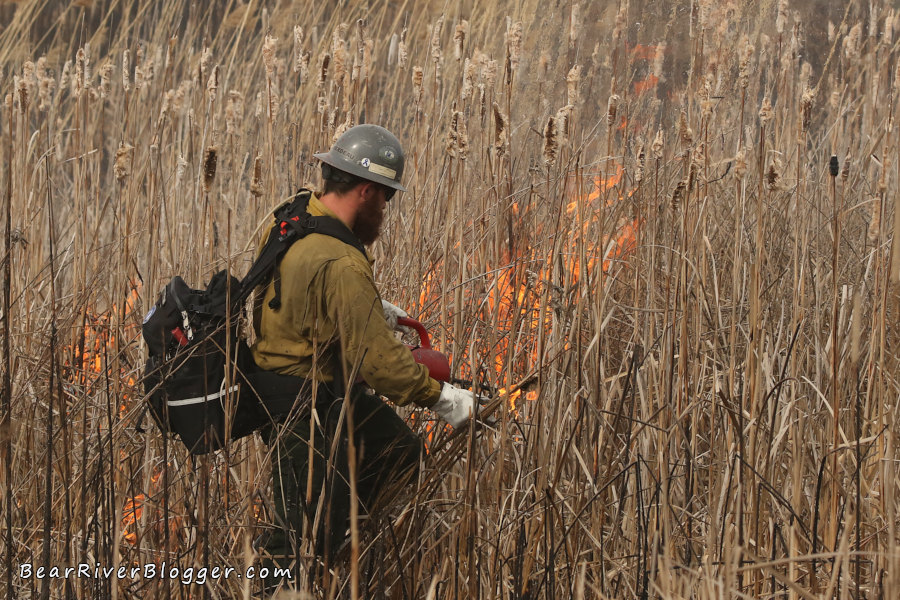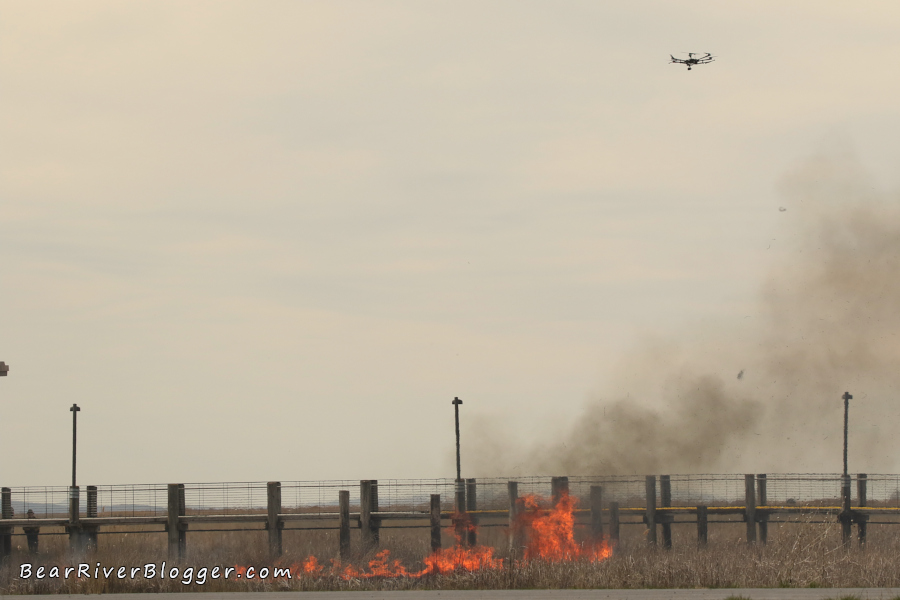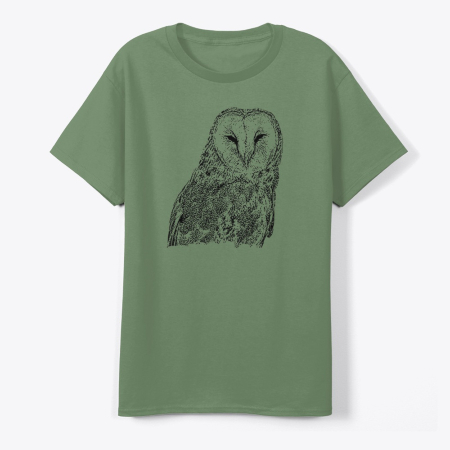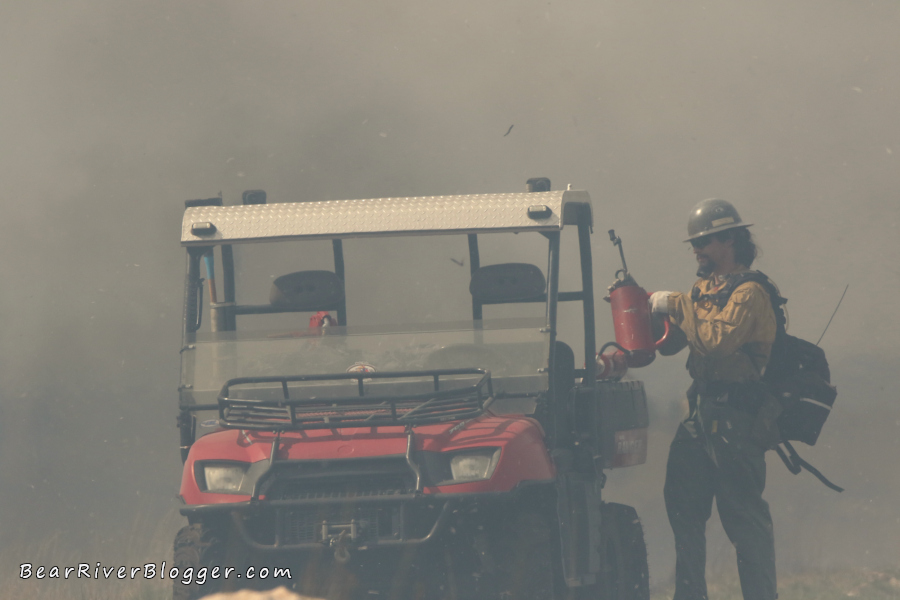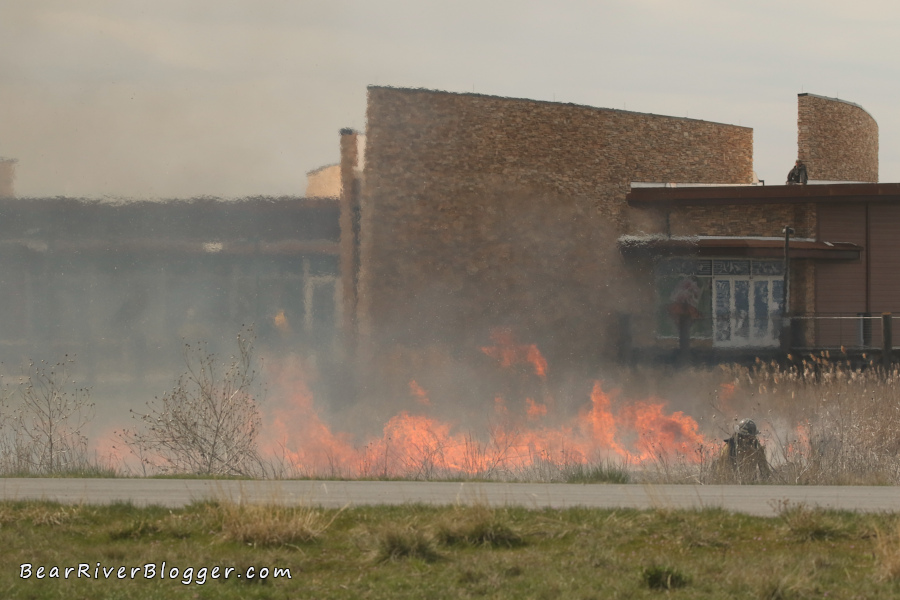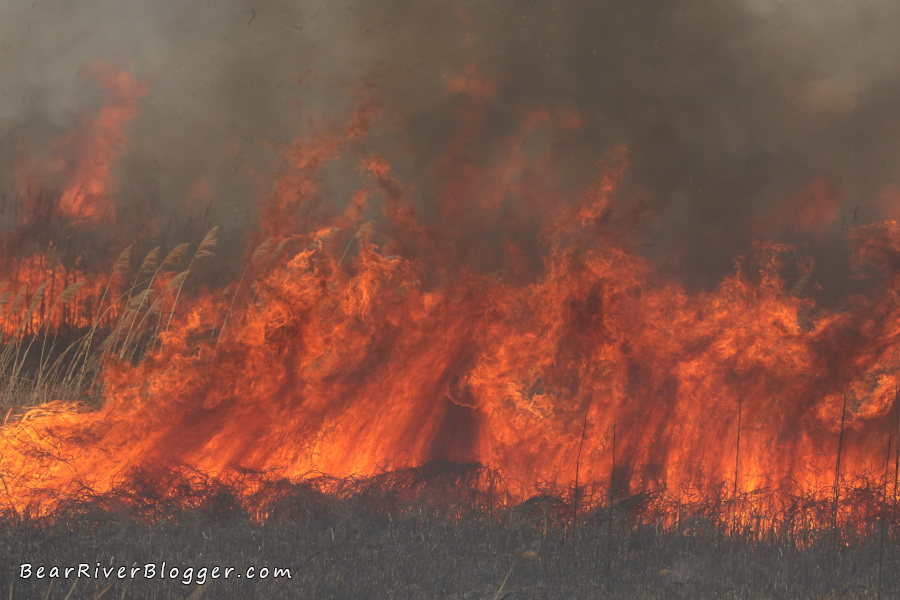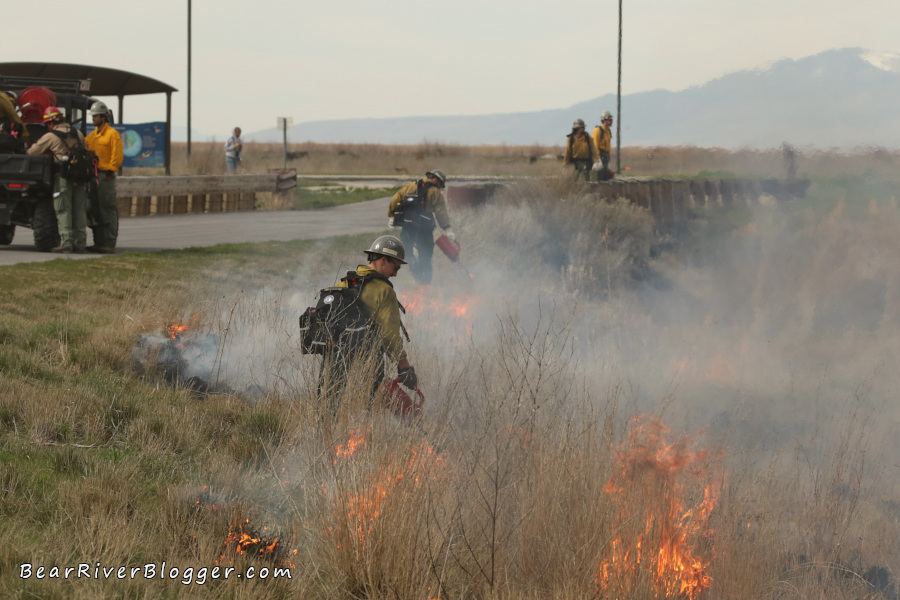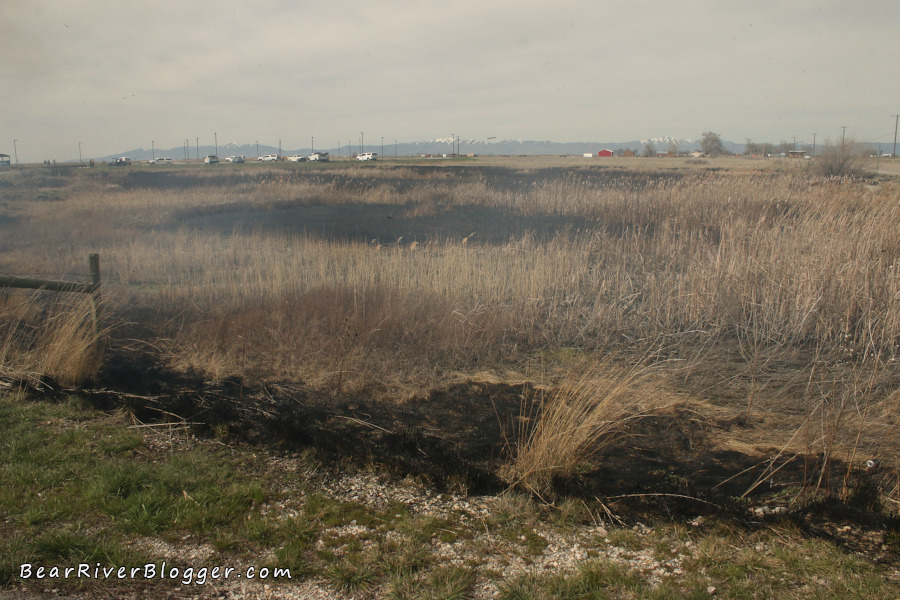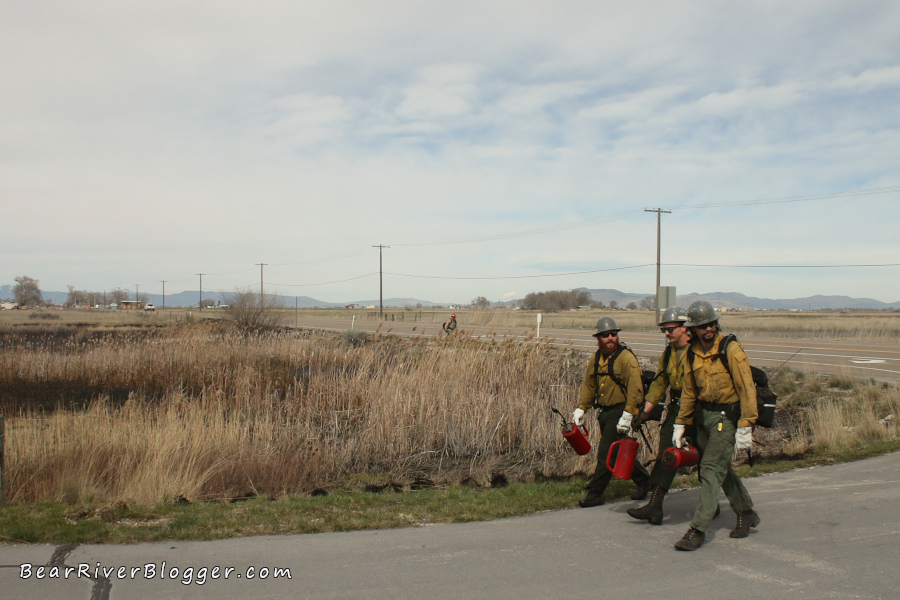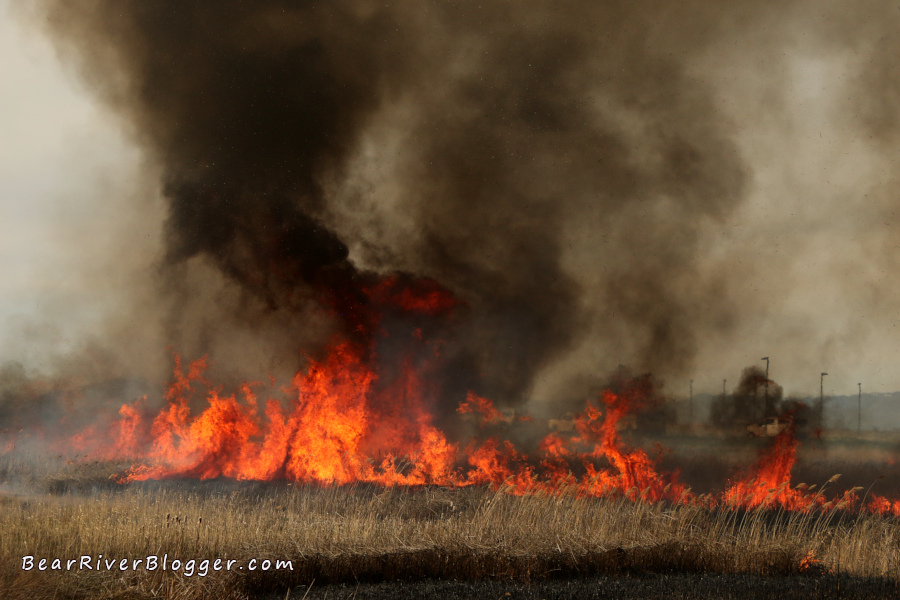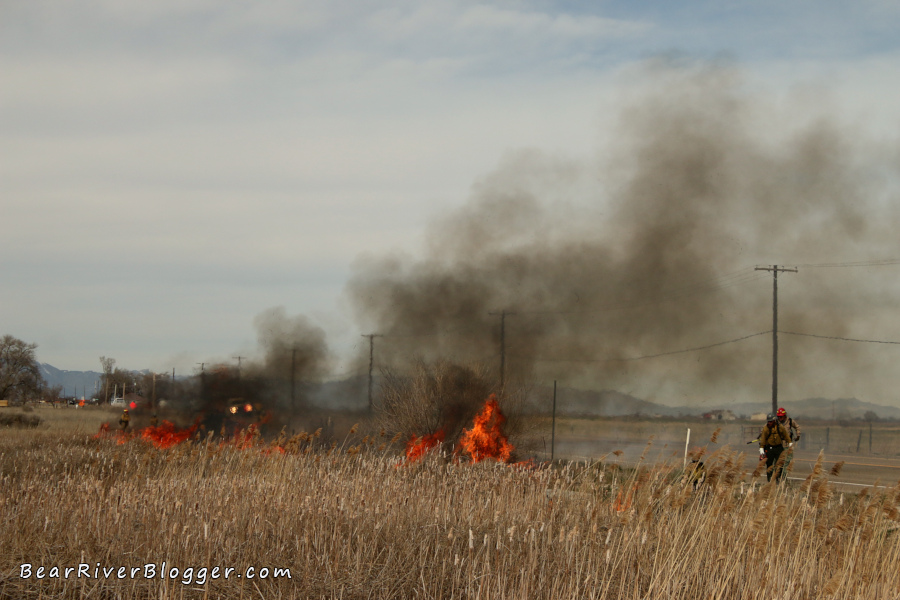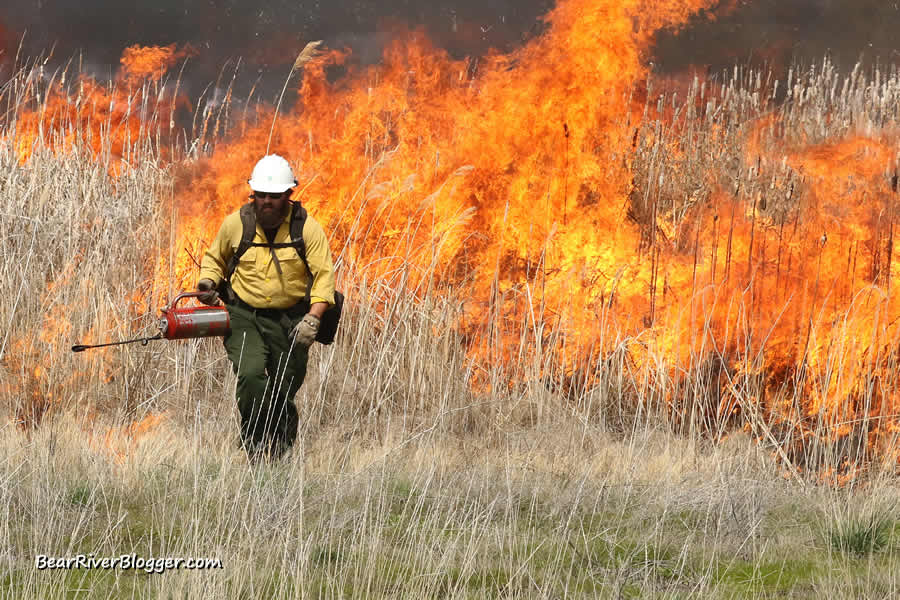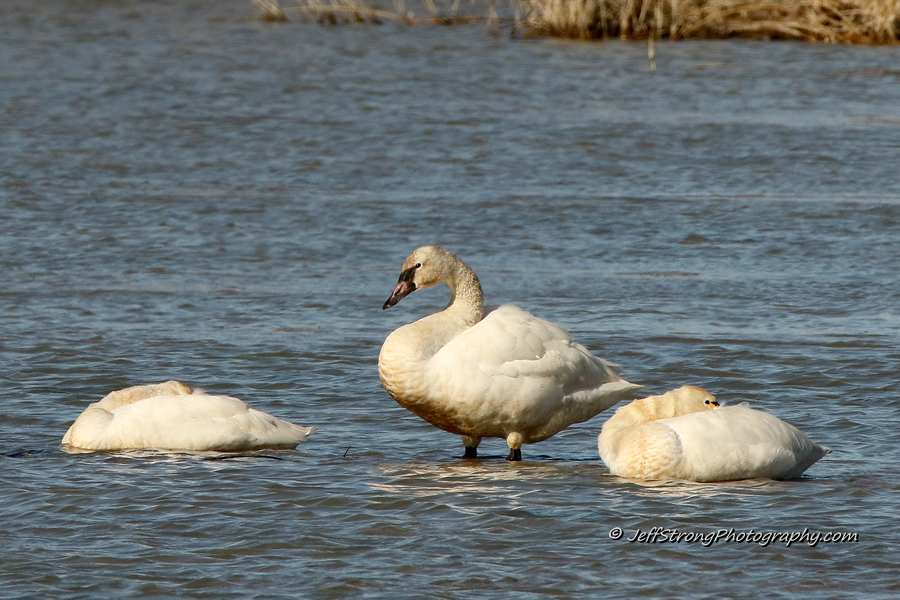I know what you’re thinking with a title like that and, well, I admit it does sound quite strange to even consider burning habitat to help birds, doesn’t it?
Trust me, exactly 5 years ago when I was given access from the Bear River Migratory Bird Refuge to follow and photograph federal firefighters as they set specific parts of the refuge ablaze I was scratching my head with the same two questions you probably have right now, how does a “wetland” actually catch fire in the first place and what does burning it do to benefit nature, more precisely how does setting habitat on fire help resident and migratory birds?
Both are great questions I have to say.
Today, I am answering those and hopefully a few other ponderings you might have about the process and purpose of burning a wetland by what is termed as a “prescribed” or “controlled” burn, namely a fire that is ignited by trained state or federal firefighters in specific areas to help manage the habitat for birds and/or other forms of wildlife, depending on the area being considered that is.
All of the embedded images, the included video below, and the photo gallery at the end of this blog post were, in fact, personally captured by me over the years from multiple controlled fires on this nearly 77,000-acre federally managed migratory bird refuge that is located in the small town of Brigham City, Utah.
Since my eye-opening moment in April 2019, a day which would end up being the first of two prescribed burns around the Bear River Migratory Bird Refuge visitors center wetlands I have now photographed and witnessed first-hand, with the second one being just last week in fact, a lot of research and reading, conversations with wildlife managers at both the state and federal level, as well having watched and photo-documented the refuge vegetation grow before and after the 2019 controlled burn have now all come together and combined into the making of this particular blog post.
It’s an article I particularly hope sheds some light on the process and purpose of prescribed fires for bird habitat enhancement since wildlife management is an overall topic that just doesn’t seem to get a fair share of exposure from many of today’s traditional news media outlets, hence the passion and purpose behind this particular website in trying to offset that deficiency in some manner.
How Does A Wetland Actually Burn?

When you break down the term wetland into its most basic or rudimentary definition it is, in essence, simply land that is covered in water, hence the phrase “wet” land.
There’s far more to it than that simplistic explanation, mind you, but for all intents and purposes for our discussion here we’ll casually define wetlands as just that, land covered in water that grows some kind of aquatic vegetation like cattails, for example.
So after all is said and done just how do land managers burn areas that are typically flooded with water and commonly covered in lush, green cattails and other aquatic vegetation?
Timing is everything when burning a wetland and why prescribed burns occur in early spring, usually during the first couple of weeks in April when at all possible.
During late spring and throughout the summer months wetland vegetation like cattails, for example, utilize water, sunlight, and carbon dioxide, i.e. photosynthesis, to produce sugars and oxygen, causing the plant to grow and similar to trying to burn a green log while camping, green cattails would also be much harder to burn this time of year, not to mention all the nesting birds that would be displaced in the process.
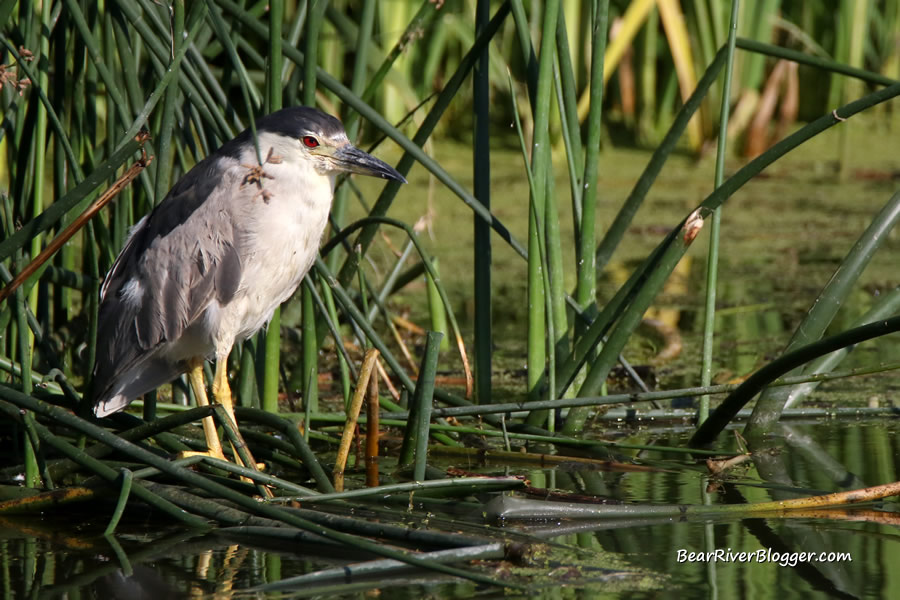
But during fall cattails send nutrients downward to be stored underground in sections of their roots, referred to as tubers, to supply the necessary nutrients for starting the growth of new shoots the following spring.
(It’s noteworthy to mention here tubers from various aquatic plants are one of the foods migrating tundra swans feed on while visiting the Bear River Migratory Bird Refuge in March during spring migration.)
As a result, the above-ground portion of the cattail eventually dies and dries out, turning brown during fall and winter for the plant’s dormancy period, and by early April the dried-out stalks are, well, quite combustible and very easily ignited and burned.
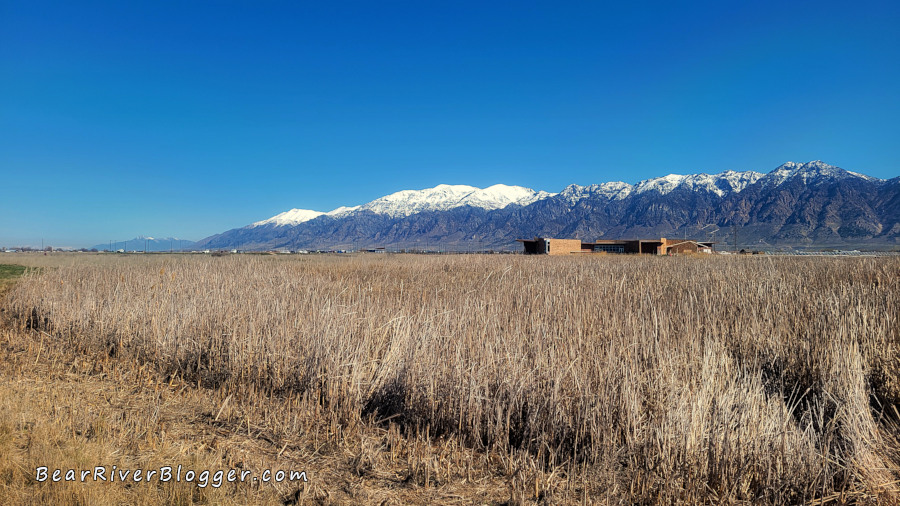
Wetland fires burning all that dried-out vegetation burn very hot, so blazing hot, in fact, that on both of these controlled burns, I purposely stood upwind of the fires and still felt the heat from a good distance away.
It is also common for wetlands to be drained before a controlled burn to give firefighters easier access to the dried-out vegetation since much of the ignition, as in the case of the visitors center fires that is, comes from hand-held drip cans on foot.
Other more technologically advanced methods can also be used to ignite and burn the dried-out wetland vegetation in less accessible areas, including drones, flares, and specific machinery designed to travel through boggy marshes that kind of resemble a tank, of sorts, so trained firefighters have many ways to burn a wetland once it has dried out for the season.
How Does Burning Wetlands Help Sustain Bird Populations?
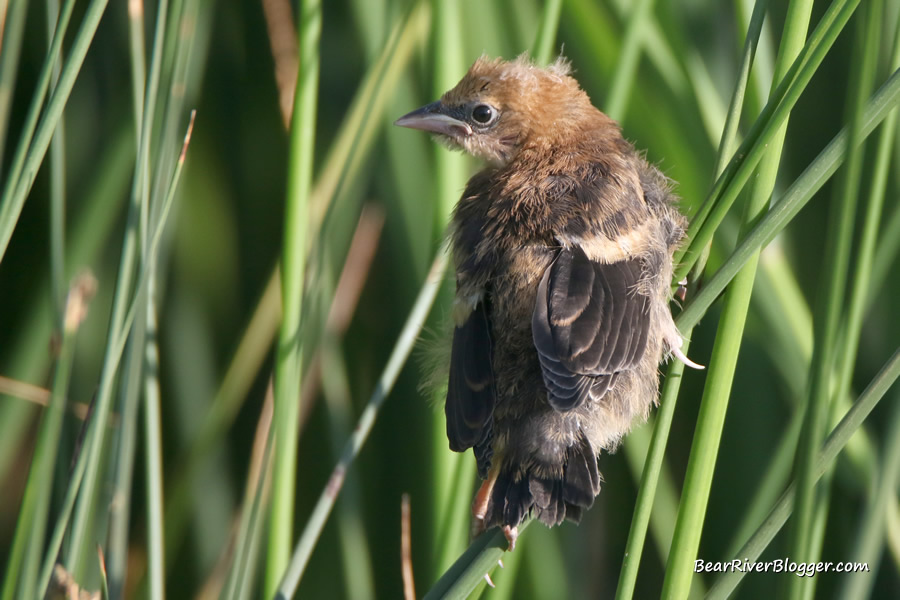
The whole purpose of burning a wetland is to remove the unwanted, dried-out vegetation so sunlight can once again reach the soil, in turn, stimulating the plant’s regrowth in the process.
Many species of birds use live, green cattails, as one example, for nesting material as well as actual nest locations and these growing plants eventually produce seeds that are consumed as food by several species of birds, red-winged blackbirds as one example, so it’s important to get cattails and other wetland vegetation growing each and every year.
Wetland vegetation, cattails in particular, can grow very dense and oftentimes several years’ buildup of dead stands end up blocking out its own new growth by limiting sunlight with a thick and dark canopy which, unfortunately, discourages use by some species of birds and produces no seeds for food during the summer so occasional controlled burning the dead vegetation helps rejuvenate an overgrown wetland, for lack of a better term, into a more productive piece of living, thriving habitat.
Simply put, prescribed fires rid wetlands of this dead, dried-out canopy, allowing for a lot of new growth to sprout and grow once again, as well as returning nutrients back into the soil from the burned vegetation as a type of self-fertilization of sorts, even more quickly than the natural decomposition process that is.
(Fire On The Bear River Migratory Bird Refuge. For short nature photography tips and interesting stories about the natural world around us, subscribe to our Bear River Blogger channel on YouTube for videos and updates from our travels while out in nature, both on and off of the famed Bear River Migratory Bird Refuge.)
The interesting part to all of this is wetland vegetation such as cattails, for example, have underground roots, rhizomes to be more precise, that are left unharmed from the fire and actually benefit from the reduction of dead plant matter above by being able to once again sprout new growth.
In fact, after the 2019 prescribed fire at the Bear River Migratory Bird Refuge visitors center new vegetation started to emerge and grow from the charred soil in just a couple of weeks afterward, and by summertime the wetland had essentially regrown itself into a green, lush marsh habitat once again, leaving almost no trace of a fire burning there just a few months prior.
One last point about overgrown, dried-out wetland vegetation is there are some birds, the Virginia rail as one particular example that comes to my mind, are quite secretive and rely on a thick canopy for their habitat so not all overgrown sections of a wetland need to be burned, there are indeed some birds that do rely on such areas for survival.
Essentially, a varied wetland habitat in this manner, one having different stands of vegetation growth, some new and some old, is a more natural environment that attracts and supports a more diverse population of wildlife, including birds, which are by far the most enjoyable type of wetland for you and me to visit and what I hope ends up as a result from the efforts around the refuge visitors center.
Invasive Phragmites.
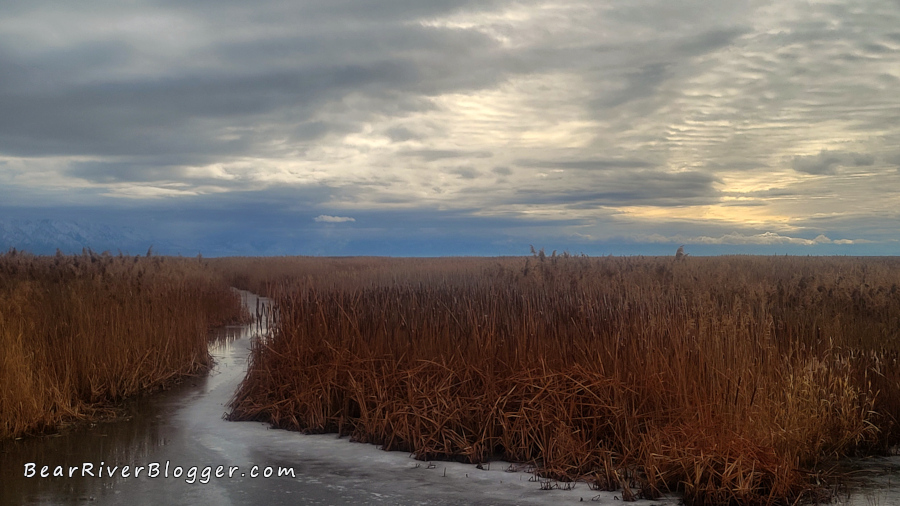
There is a threat, however, to almost all local wetland habitats here in northern Utah, including around the refuge visitors center, where both state and federal land managers also utilize prescribed fires to help battle a dire effect on native flora and fauna from the highly invasive and greatly unwanted phragmites plant.
Unfortunately, it may never be known how phragmites unexpectedly showed up in every wetland up and down the east shoreline of the Great Salt Lake, including the Bear River Migratory Bird Refuge, after the 1984 floodwaters finally receded a few years later and since then is literally choking out the natural vegetation acre by acre, year by year.
Phragmites is a fast-spreading non-native grass that can grow as high as eighteen feet in very large and quite dense patches that outcompete cattails and other native vegetation for soil and sunlight but is a type of vegetation itself that offers very little in the way of food and nesting materials for most, if not all, of the birds that live in wetland habitats here in North America and in Utah.
The life cycle of the phragmites plant is somewhat similar to the cattail in the sense that it can spread by seed and rhizomes (underground horizontal roots) as well as stolons (above-ground lateral shoots not found on cattails), making it very aggressive in its growth and spread and extremely hard to control and exterminate.
Much like cattails, the phragmites plant also sends nutrients back down to its roots during fall and stores them in tubers to fuel the upcoming spring’s growth while the stalk itself dries out and dies during late fall and winter, making a possible springtime burn identical to cattails with a similar result from new growth stimulated by the resulting newly opened up soils basking in the sunlight.

The only difference is that phragmites are unwanted and oftentimes treated with herbicides in the fall as they send their nutrients back down to their roots in hopes of the powerful chemical treatment ending up killing the pesky roots once and for all.
The tricky part is, however, timing the herbicide treatment when the phragmites is actively pulling nutrients back down into the root system, too soon and the herbicide might kill the above-ground portion and not the root, leaving the plant to regrow the following spring.
If the herbicide treatment is successful, a springtime burn clears out the unwanted dead phragmites vegetation where cattails and other native plants can regrow unfettered without such high competition for both soil and sunlight.
Eliminating phragmites from all of the Bear River Migratory Bird Refuge wetlands, not just around the visitors center, is a very high priority for refuge management and staff but not a small task by any means for the nearly 77,000 acres of habitat that needs to be managed.
Methods such as controlled burns, herbicide sprayings, cattle grazing, mowing, and even water level management are methods being used by the refuge to try and get an upper hand on this non-native, highly invasive grass to restore the native wetland vegetation that benefits the resident and migratory birds which rely on the Bear River Migratory Bird Refuge each year for survival.
The 2019 Bear River Migratory Bird Refuge Prescribed Burn, Before And After.
In 2019 I was allowed to photograph the prescribed burn around the Bear River Migratory Bird Refuge visitors center and in preparation for this rare opportunity, I prefaced the event with some photographs of the intended burn areas days before the fire for comparison with similar images taken just after the fire and several months later to depict how the vegetation responded to the prescribed burn.
The primary intent of this burn was just to clear out the dead vegetation and allow new growth to emerge around the pond and, as you can see by the photographs below, it fulfilled its purpose quite nicely.
Noting how open and clear the pond was back then, it wasn’t uncommon to find a great blue heron standing in some of these open wetlands around the Bear River Migratory Bird Refuge visitors center, a sight I rarely see nowadays around these same wetlands.
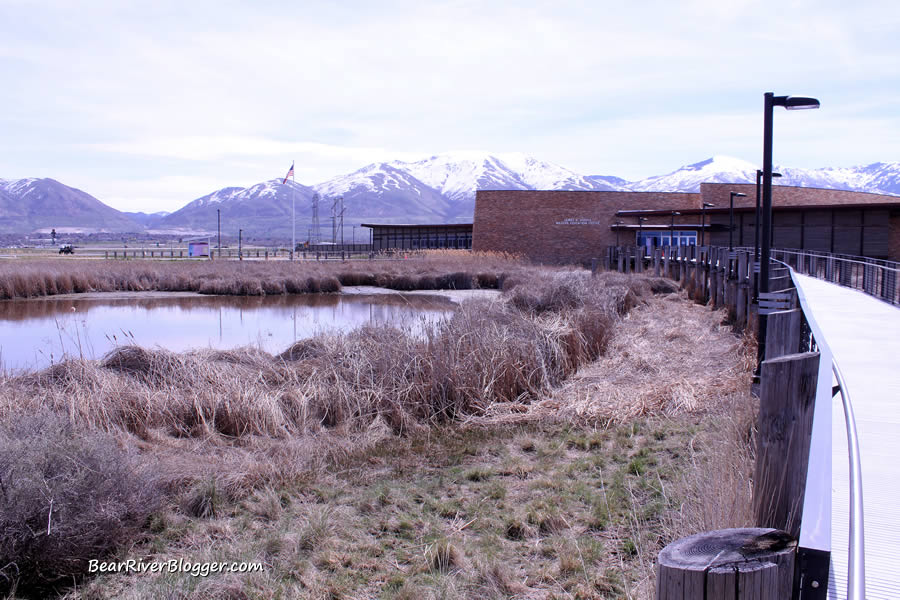
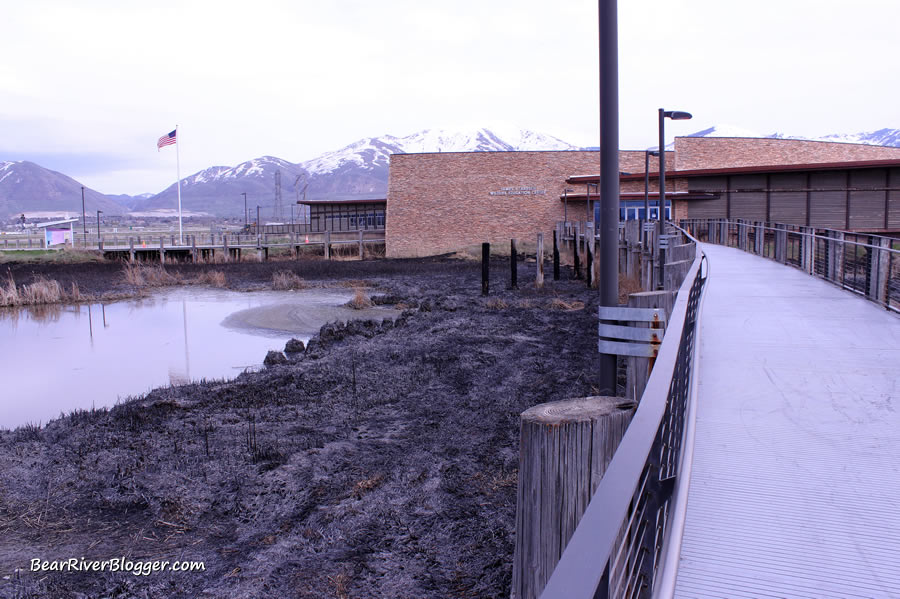
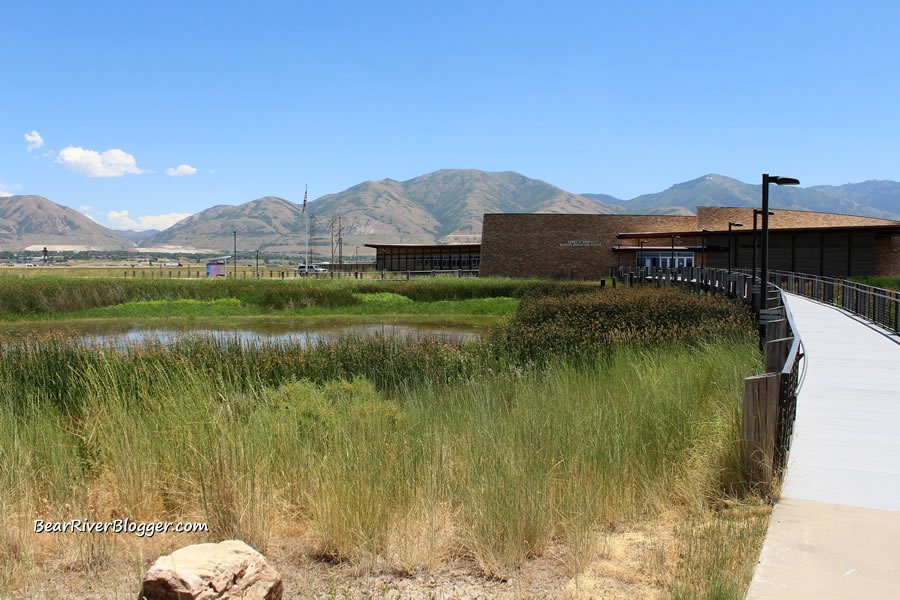
The 2024 Prescribed Burn On The Bear River Migratory Bird Refuge.
Now let’s compare the same pond before and after the 2024 prescribed burn where both the conditions and the intent are a little bit different than 5 years prior, more about that in a minute.

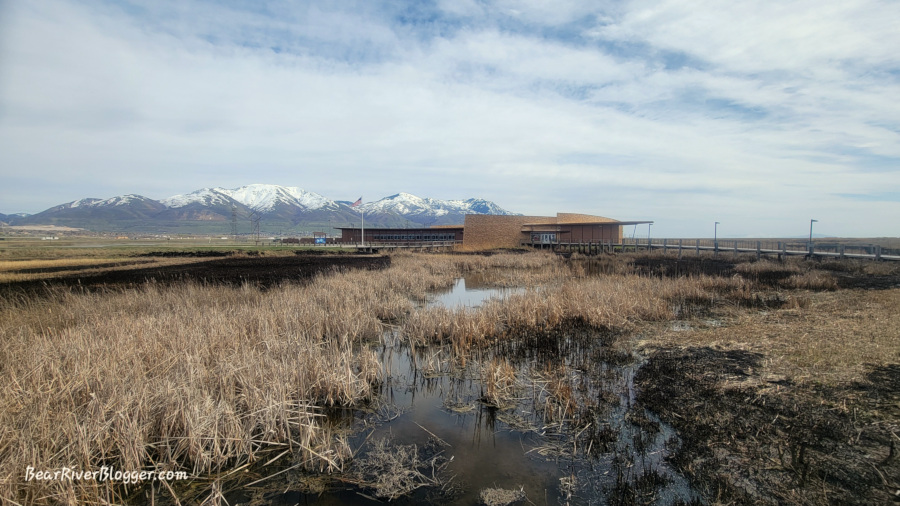
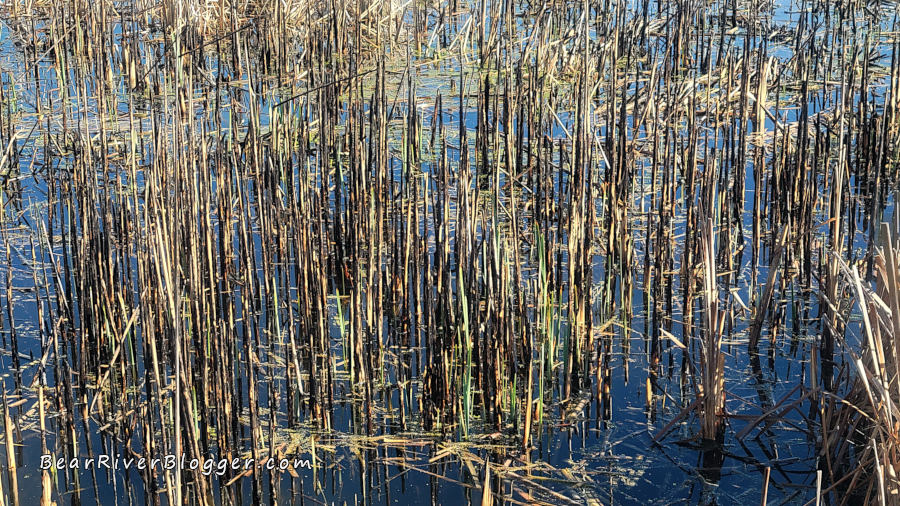
The Downsides To Prescribed Burns On Wetlands.
There’s no question that prescribed fires do, in fact, help rejuvenate wetlands by clearing out dead vegetation, allowing new growth to sprout in its place.
I’ve watched the before and after vegetation growth from several fires on the refuge over the past few years, both around the visitors center and on the auto tour route, to confidently say prescribed fires do help stimulate and enhance cattail and other vegetation to grow, that is definitely a no-brainer.
Unfortunately, however, there are some downsides to controlled habitat burns that should be mentioned to give a fair representation of the different sides of prescribed fires and all the effects they have as a result but in no way is this intended to take sides either way, good or bad, regarding the effects these fires have overall but just a brief mention they do have some negative effects the public should be made aware of.
The most notable and most visible downside to a prescribed burn is, simply put, the smoke and ash that come as a result of such a fire.
Dried-out cattails and phragmites are very flammable and, as you can clearly see from the images and video attached to this blog post, they also produce a lot of smoke and ash that gets put into our environment, including the air we breathe.
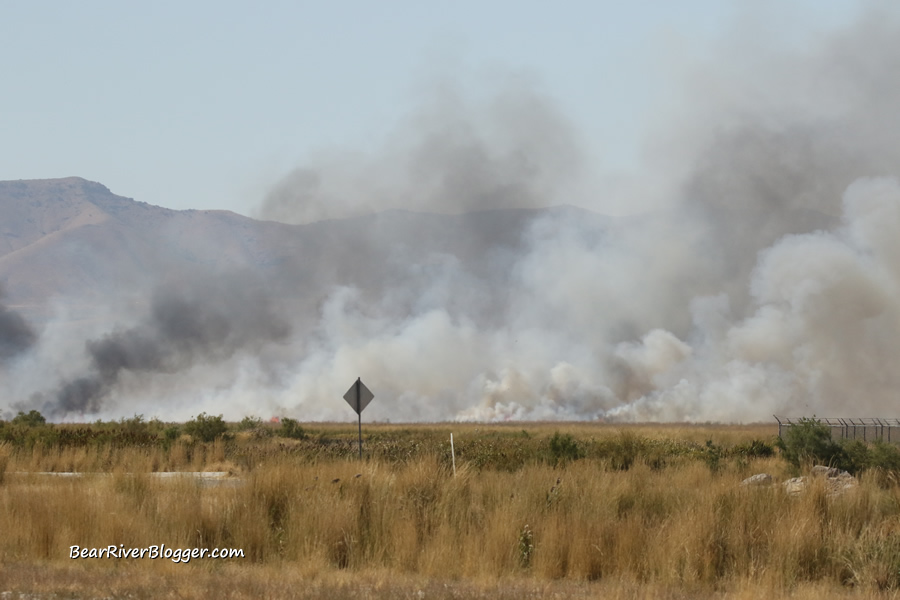
In order to conduct a prescribed burn certain weather-related conditions do have to be met so the smoke gets cleared away quickly but even so, all that smoke and ash has to end up somewhere in the atmosphere and our environment.
There is also a financial cost to controlled burns that is never mentioned but is still quite obvious if you watch one occur, all that manpower, technology, and machinery has to be purchased and funded so there is a monetary cost to a prescribed fire that is attached to the burn itself that seems to never get any mention.
Another downside to controlled burns is phragmites will almost always grow right back after a burn if not treated beforehand at the right time of year, namely fall when nutrients are being sent downward to be stored for the winter in their roots, with an herbicide called aquatic glyphosate (i.e. Roundup) to kill the entire plant, especially their tubers and rhizomes which feed and help the plant spread.
Mowing, grazing, and water level management techniques do help slow the spread of phragmites to some degree, in a more natural way, mind you, however, without the use of powerful herbicides a prescribed fire will almost always fuel regrowth a few weeks later of both wanted and unwanted wetland vegetation, especially the dreaded phragmites which is an extremely hard plant to not only keep from spreading but especially difficult to kill outright once and for all.
Restoring The Bear River Migratory Bird Refuge Visitors Center Wetlands
After talking to refuge management, I am learning the purpose of this most recent prescribed fire around the Bear River Migratory Bird Refuge visitors center is twofold and part of a much larger, long-term plan for these wetlands, eradicating phragmites from the grounds and opening up the ponds a bit more to encourage both more diversity and a greater number of birds that use these small but important wetlands.
It is a multi-year habitat restoration plan that may need to adapt a bit as it goes along but it’s now underway with the first step of burning the dead, overgrown cattail, tulles, and phragmites to get some new vegetation to grow already in the books.
Water levels in the pond have recently been raised since the fire to help try and limit phragmites regrowth and a possible herbicide treatment on the phragmites this fall was mentioned during my recent conversation with refuge management.
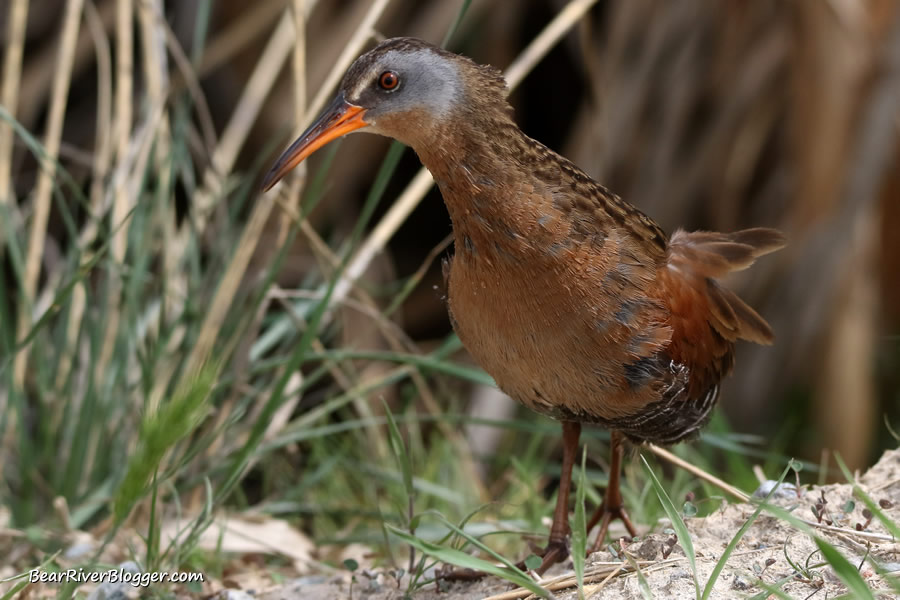
It was also noted during these conversations with refuge management that some of the heavy vegetation will be left alone as a habitat for the more secretive birds, including the Virginia rail, for example.
This multi-year restoration plan is in the early stages at this point and may have a few unknown variables to work through along the way but, nevertheless, it has this birdwatcher excited to someday have a greater variety and greater numbers of birds on the nature trails behind the Bear River Migratory Bird Refuge visitors center to photograph and just plain watch and enjoy.
Subscribe And Follow Bear River Blogger
If you are a lot like me, an avid birdwatcher and nature photographer who loves to be outdoors I offer you to head on over to our subscribe page and sign up for email notifications for future blog posts about our love for nature, including the famous Bear River Migratory Bird Refuge.
For those of you who utilize the technology of social media, we have also started a Bear River Blogger Facebook page you can follow where we post updates and images about the famous Bear River Migratory Bird Refuge auto tour route, as well as other natural places of interest, that are too small for a blog post here on this website.
Bear River Migratory Bird Refuge Prescribed Fire Photo Gallery
